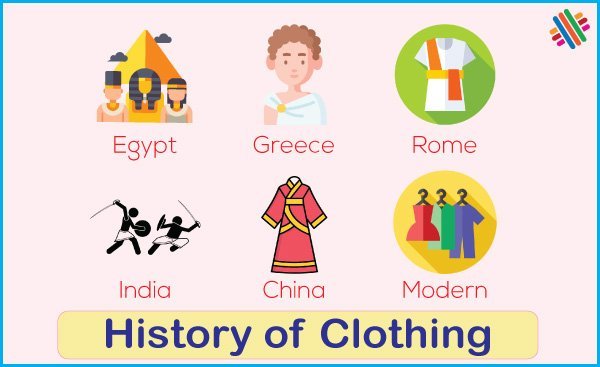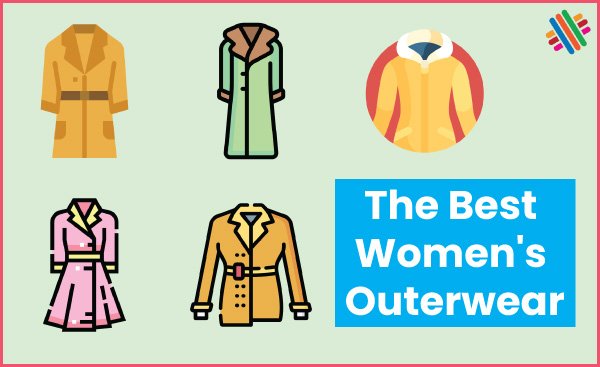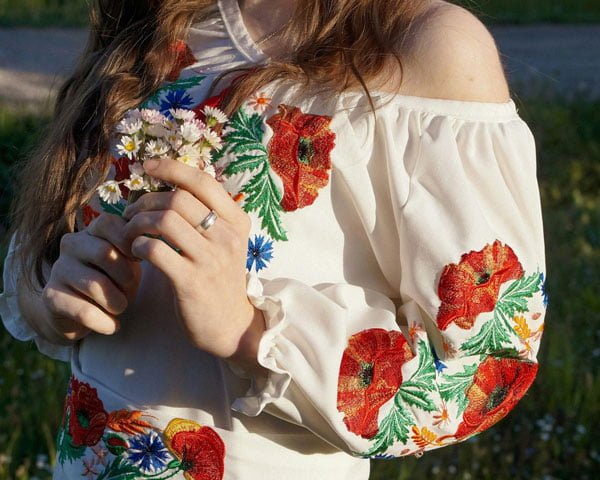The Importance of Clothing: What You Need to Know
Introduction
Clothing! Without them, we’d all be running around feeling the breeze in places we don’t necessarily want to feel the breeze, right? But dress is more than just a strategic skin for our modesty.

Through dress, individuals can display their cultural heritage and affiliations. Traditional garments such as the kimono, saree, or Scottish tartan signify the uniqueness of a particular culture and its rich history. These dress choices showcase a sense of pride and identity, preserving cultural traditions.
Dresses are as universal as having two eyebrows, and man, has this fashion affair been long. Cave people slapped on some animal skins to protect themselves from harsh weather. Now, we’ve got temperature-regulating fabrics and self-lacing shoes. We’re putting that “necessity is the mother of invention” saying to the test! Let’s unravel this fabric of thought, shall we?
Definition of Clothing
Did you ever think that we would have to define clothes? Sounds a bit extra, doesn’t it? But hey, let’s do it for the fun. Clothing refers to items made from fabrics, trims and accessories that we wear on our bodies. It’s that coat you put on when it’s cold, the hat you wear when the sun’s too bright, or the socks that keep your toes toasty in the winter.
History of Clothing
Humans started creating clothing as a means of protection and survival. Apart from hide-and-seek with saber-toothed tigers—no joke—these early humans had to contend with extreme climate conditions. They used animal skins, bones, leaves, and even grass to fashion the earliest modes of cloth.
In a way, you might say it was the original sustainable fashion, don’t you think? No factories, no polluting dyes, just sourced from the nature. A caveman’s sartorial choice was driven by necessity rather than style.

Ancient Egypt
Ancient Egyptians, flamboyant trendsetters that they were, loved to play up their outfits with elaborate jewelry. The climate also factored into their dress choices—lightweight linens were perfect for the dry, hot weather. It was like their version of a sweat-wicking Under Armor t-shirts
Remember those iconic short kilts in hieroglyphs and movies like ‘The Mummy’? They weren’t just a fashion statement but also signified social status—the more elaborate the pleating and length, the more prestigious the person.
Ancient Greece
The Greeks? Oh, they were all about that drape. You’ve seen the classic white chiton—a loose-fitting garment like a sundress. High style points to the Greeks for practicality and aesthetics! The intricately woven woolen himation (outer cloak) was their solution to the chilly Mediterranean winters.
And let’s not forget those Olympic athletes. They would participate completely naked to celebrate the human body. Not something you’d see now a days at the Olympics, huh?
Ancient Rome
Enter Rome, trousers became the rage. A far cry from the free-flowing Greek robes, Romans got fancy with their dress, credited to their military culture. The toga—the Roman version of the Greek himation- symbolized Roman citizenship. The word ‘toga’ is casually translating to ‘clothing’, and it was a sweeping statement of their culture and status.
It’s like today’s jeans, t-shirt, and sneakers combo – commonplace, practical and yet so iconic.
Ancient China
Next, we float to ancient China—where clothing was not just fabric but a matter of philosophy and religion. The revered Chinese philosopher Confucius believed a harmonious society could be achieved through appropriate dress. It’s like the ‘dress for the weather’ concept is taken a tad too seriously.
The Hanfu, a traditional Chinese dress, was characterized by its wide sleeves and a loose belt – a perfect blend of functionality and elegance. The rationale behind it was to maintain a respectful distance from others.
Ancient India
When discussing India, we talk about an explosion of colors and print. The ancient Indian attire of dhoti for men and saree for women were flexible, un-stitched garments. The saree, a single 5-9-yard-long piece of cloth, was an ode to the Indian woman’s grace and poise.
Much like the saree, the turban or ‘pagri’ was a symbol of honor and respect. It had the practical purpose of shielding against the harsh sun. India showed us that dress could be beautiful, functional, and meaningful.
Medieval and Renaissance Clothing
Fast forward to the Medieval and Renaissance eras. Clothes were less about function and more about status. Dress items became increasingly complex in design. Wealth was flaunted through brocades, silks, dyed velvets, and detailed embroidery.
Sumptuary laws were enacted to control conspicuous consumption. Silks, fur, and the color purple were reserved for nobility. So, if a peasant was caught wearing silk socks, it was game over! – talk about extreme fashion policing.
During the Renaissance, fashion took a dramatic turn. High waistlines for women gave way to bodices—hello, hourglass figures! Men flaressed tights. Color, dramatic sleeves, and decadence was the order of the day.
20th Century and Modern Clothing
Now comes 20th century, fashion saw its most significant evolution, primarily influenced by wars, social movements, and technological advancements. The 20’s flapper era unleashed the rebellious spirit of women. The 50’s introduced us to denim, the one true love of our wardrobes, and the 70’s gave us the evergreen bell-bottoms and disco wear. The 90’s grunge and logo mania made its mark.
Fast forward to today’s age, you have the rise of athleisure, sustainable fashion, and a strong merger of technology and fashion. Fashion cycles have become faster with fast fashion, leading to a disposable clothing culture.
5 Importance of Clothing
The following 5 points will explain why we wear clothes and how it influences our daily and social lives.
1. Protection and Functionality
Picture this – you’re in a snowstorm in just a swimsuit. It’s not a pretty picture, right? dress protects us from a wide range of weather conditions. From the heavy coats we don in winter to the light linen shirts we wear in summer, our clothes act as our thermostat.
And it doesn’t stop at the weather! Dress also protects us from environmental hazards. Consider the gloves and long sleeves gardeners wear to avoid prickly plants or bug bites. Or the helmets and padding that come between us and potential sports injuries!
Ever notice how swimmers aren’t doing laps wearing denim shorts? Or how ballerinas don’t pirouette in winter boots? That’s the power of design and the suitable materials. They make a world of difference in how dress supports our activities.
Clothes have a dynamic role in our physical efforts. Cyclists wear aerodynamic suits for speed, while hikers wear sturdy, comfortable outfits. Depending on what we’re doing, our dress choices can boost our performance or, in some cases (seriously, don’t wear denim in the pool!), hinder it.
2. Identity and Expression
Clothes are our non-verbal mouthpiece, spouting volumes about our identity and expression even before a single word leaps from our mouths.
Dress is an express pass into visualizing cultural customs and values. Glancing at a Japanese Kimono, an Indian Sari, or a Scottish kilt can transport you into different traditions and customs.
Dress can likely tell you more about a person’s social status than their bank balance. The brands we wear, the condition of our clothes, and even the styles we favor can indicate our societal and economic identity. Its heavy stuff packed into light fabric!
Clothing is to us what a canvas is to a painter, a platform to splatter our inner selves outward. Punk, chic, retro, grungy, it’s all there, laying out your personality on a visual showcase for others!
Fashion trends are like that ultra-popular kid in high school everyone wants to emulate. They can dictate our dress choices and mark periods in unique ways. Bell-bottom jeans, anyone? Or what about that neon phase in the ’80s’?
3. Psychological and Emotional Impact
Alright, deep breath because we’re diving deep into the emotional and psychological impacts of dress.
What we see in the mirror isn’t just us, it’s us draped in fabric, which, more often than not, affects how we feel about ourselves. If your outfit screams power, you will probably feel pretty unstoppable.
Ever heard the phrase “dress for the job you want, not the job you have”? Our clothes can send messages about our competency, attitude, and ambition in professional settings.
Dresses can also impact our mood and emotions. Don’t believe me? Try spending a day in your favorite outfit and see how it affects your mood. You’ll be surprised at the spring in your step!
And, of course, comfort. The glorious, bliss-inducing comfort. It’s not just about the physical; the scale leans heavily towards psychological comfort, too. Nothing compares to the solace of a snuggly sweater or the ease of well-worn jeans.
4. Economic and Environmental Factors
Okay, eco-warriors and finance enthusiasts, this one’s for you!
The global fashion industry has a sizeable economic footprint. With millions of jobs, from designing to manufacturing, marketing to retail – it’s quite the economic powerhouse. Fashion is indeed a serious business!
But all that glitters isn’t gold. The industry has its fair share of challenges, including labor issues and complex supply chains. Ethical treatment of workers and transparency is a must. Nobody wants a side of guilt with their trendy attire.
The fashion industry has been called out for its environmental impact – and rightly so. The solution? Sustainable and ethical dress practices. Dresses made from sustainable materials like organic cotton or linen and ethical labor practices.
Fast fashion may keep us trendy but leaves a not-so-stylish footprint on our environment. Over production, waste, and pollution are unsavory by-products of fast fashion, sparking a much-needed conversation on slow, sustainable, and timeless style. Let’s shop responsibly, shall we?
5. Fashion and Style
Fashion is as multifaceted as avocado toast toppings, and I’m not just talking about the sprinkle of chili flakes or the overpriced beet hummus spread.
Just like our beloved toast, it isn’t just about what’s on top. The choice of bread, the toasting technique, the slice’s thickness — everything counts. Similarly, fashion isn’t merely about the clothes we wear. It’s an absolute cocktail of personal expression, functional needs, societal trends, and historical context — all sewn together with the thread of human creativity and ambiguity.
So, why do we care so much about what kind of jeans are in style, or if vests over shirts are still a thing (honestly, I’ve lost track)? We care because, for better or worse, the garments we drape ourselves in are an extension of who we are and how we want to be seen by the world.
Conclusion
Clothing, my friends, is a style-screaming, emotion-regulating, economy-boosting, identity-announcing marvel. We owe a lot to the humble act of draping, stitching, and size labelling, don’t we?
But as static our clothes might be on a hanger, their significance in society is ever-evolving, adapting to our changing world faster than the treads of a sewing machine.
So, the next time you stare into the depths of your wardrobe or add that flashy skirt to your online shopping cart, ponder its journey and the impact. Remember, a well-chosen outfit impresses the mirror and our mighty planet. Well, there you have it. It seems that dresses, apart from covering our birthday suit, have much to say and more to offer. So, let’s continue to wear, share, care, and be aware. After all, clothes make the man, woman, or however one chooses to identify, right? Wear on!




Your Blog is very nice.Wish to see much more like this. Thanks for sharing your information
your article is valuable for me and for others.see this type of article now…
our information is very interesting. Thank you for sharing.Either way keep up the excellent quality writing.